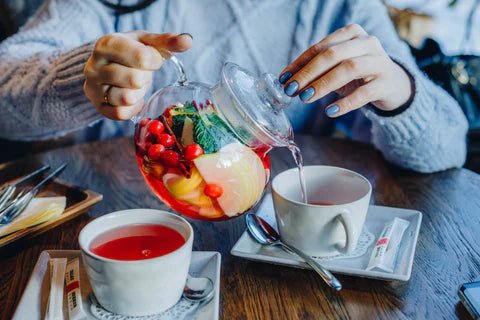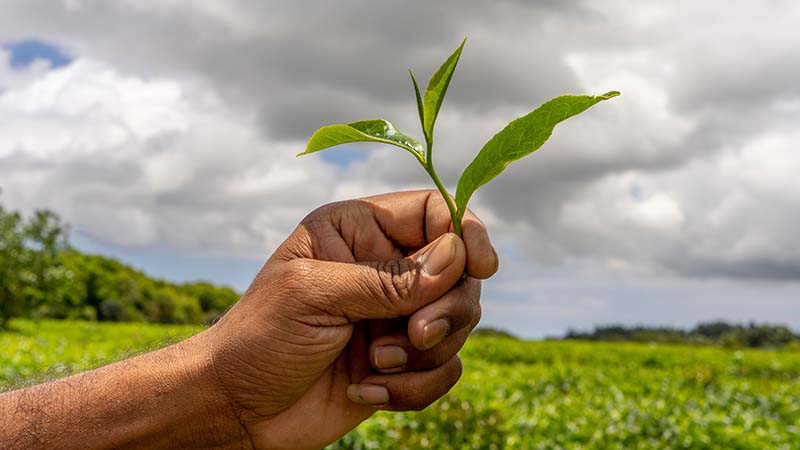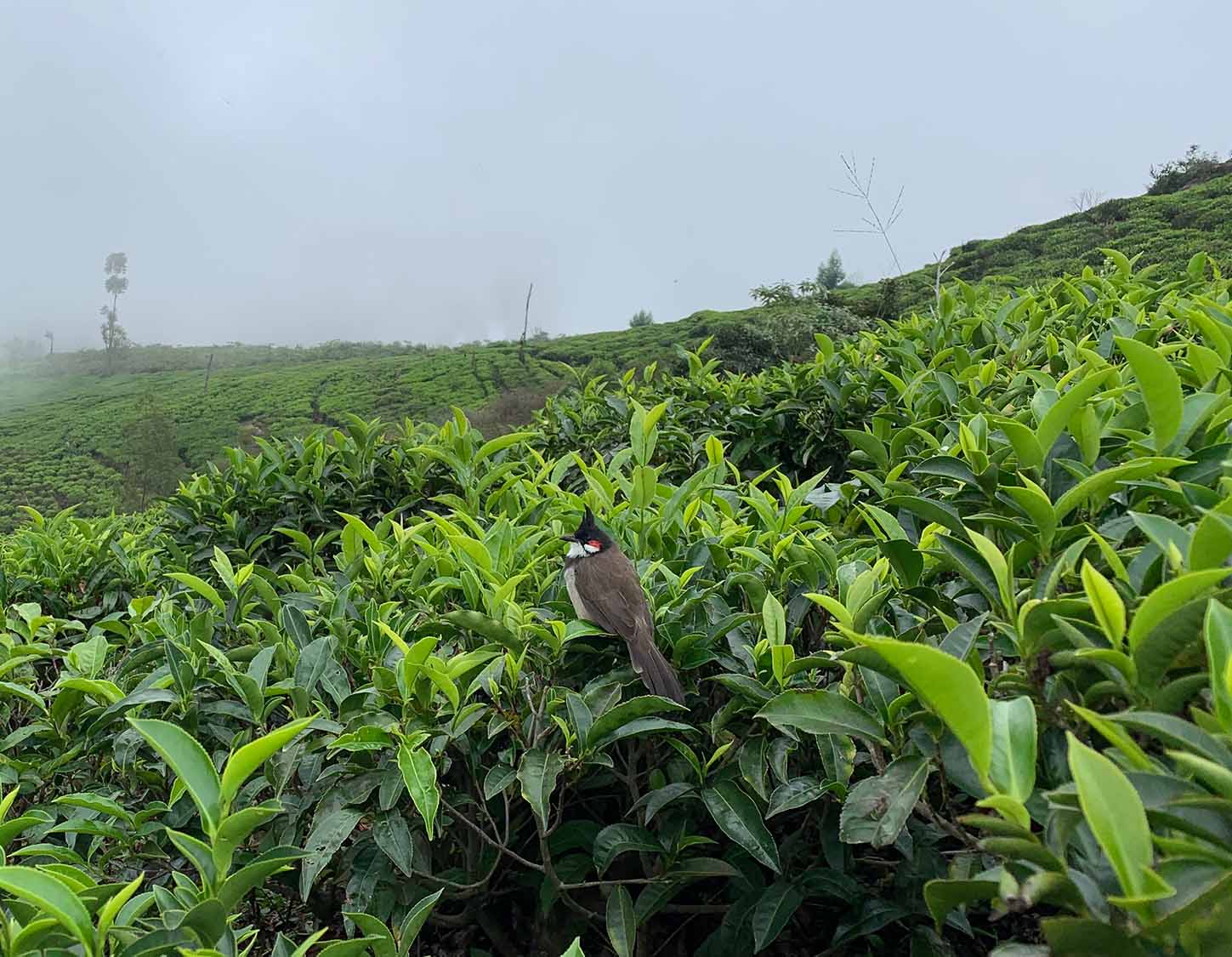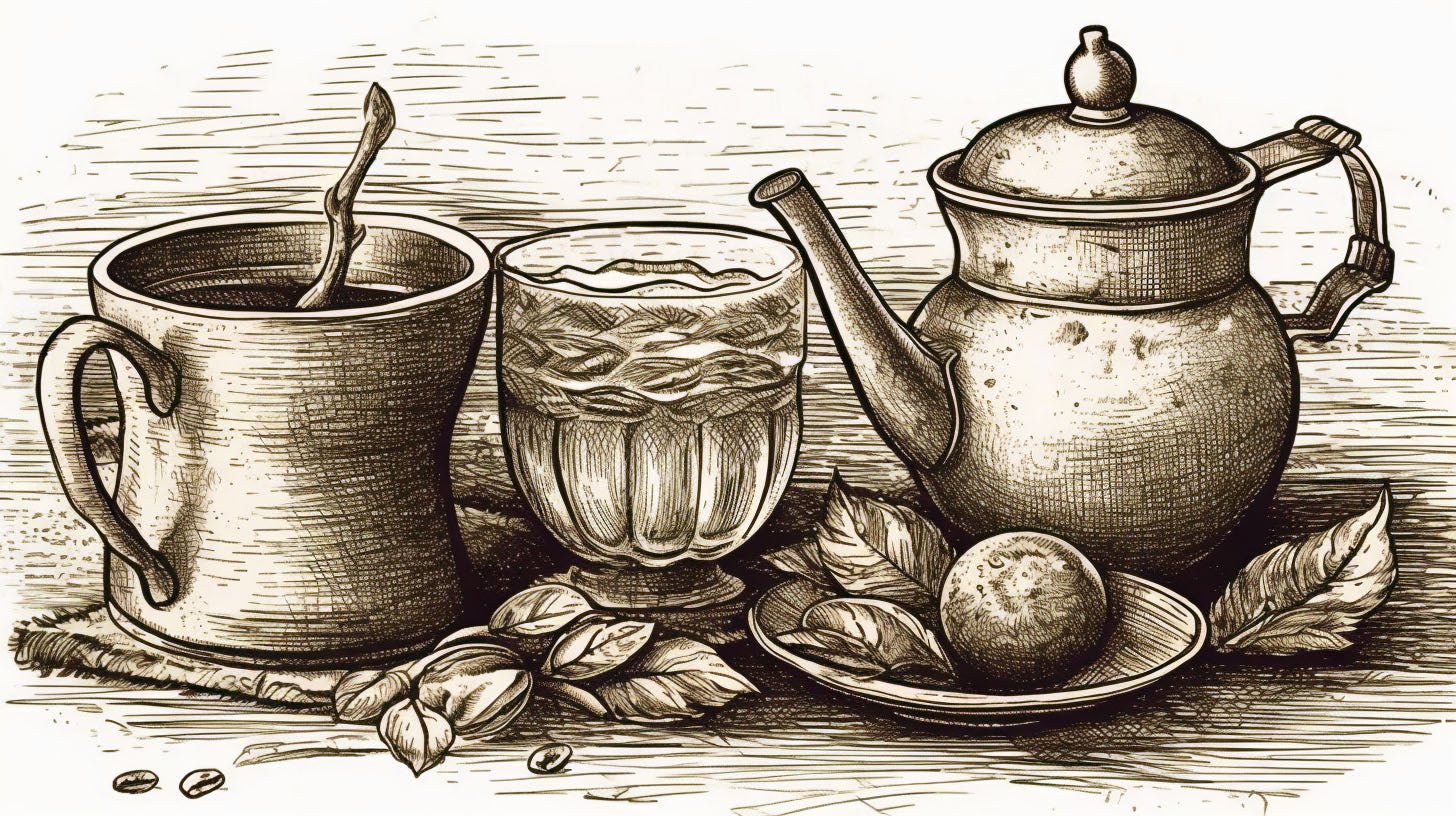
The Art of Chai: Exploring the Rich History and Cultural Significance
Chai, known as "tea" in India, holds a deeper meaning beyond being a mere beverage – it is an art form, carefully handed down from one generation to another. This iconic brew, referred to as chai throughout this article, carries a profound historical and cultural importance, ingraining itself into the hearts and thoughts of individuals globally. Beyond its role as a simple drink, chai represents a powerful symbol of tradition, fostering a sense of community, and evoking spiritual connections.
In this article, we will explore the origins of chai and its evolution over time. We'll take a deep dive into the sensory experience of chai and discuss the ritualistic aspects of preparation. Finally, we'll answer some burning questions about this beloved beverage.
Get ready to embark on a journey through the art of chai, and discover what makes this humble drink such an integral part of so many cultures worldwide.

The Origins of Chai: Tracing Back to Ancient Times
Chai has a rich history that can be traced back to ancient times. It is believed that the original recipe for chai was concocted over 5,000 years ago in the region that is now modern-day India. The earliest versions of chai consisted of a simple mixture of spices and herbs, brewed with hot water to create a soothing and invigorating drink.
Chai's illustrious history dates back to ancient times, with its origins traced over 5,000 years ago to the region that is present-day India. According to belief, the original chai recipe emerged during this period. Early renditions of chai were comprised of a harmonious blend of spices and herbs, carefully infused with hot water to craft a comforting and rejuvenating elixir. This tradition draws upon India's rich Ayurvedic heritage, where certain spice combinations were valued for their medicinal properties, further enhancing the significance of chai beyond its delightful taste.
At the time of its inception, chai was primarily consumed for its medicinal properties. Its blend of spices and herbs were thought to have healing powers and were often used to treat a variety of ailments, from digestive issues to colds and coughs.
Over time, the recipe for chai evolved and became more complex. As trade routes between India and other parts of the world opened up, new ingredients were added to the mix, including tea leaves and milk. By the 1850s, chai had become a staple beverage in India, and its popularity began to spread to other parts of the world.
Chai Preparation in Ancient Times
The preparation of chai in ancient times was quite different from the methods commonly used today. The ingredients for chai were ground together using a mortar and pestle, producing a fine powder that was then steeped in hot water or milk.
One of the key ingredients in ancient chai was ginger, which was thought to aid digestion and provide warmth to the body. Other ingredients included cardamom, cinnamon, and cloves, each of which had its own unique health benefits.
Chai was typically consumed after meals or during social gatherings, where it was served in small cups and enjoyed with friends and family. The tradition of sharing chai with loved ones has been passed down through generations, making it not just a beverage but also a symbol of community and togetherness.
Chai Today
Today, chai is enjoyed by millions of people around the world. Its complex blend of spices and aromas make it a truly unique beverage that is both delicious and comforting. While the recipe for chai has evolved over time, its cultural significance remains just as strong today as it did in ancient times.
Whether enjoyed in a bustling cafe or in the comfort of one's own home, chai is a beverage that brings people together and provides a moment of relaxation and connection in an often chaotic world.
Chai Across Different Cultures: A Global Phenomenon
Chai, with its unique blend of spices and comforting warmth, has become a beloved beverage around the world. While it originated in South Asia, chai has been embraced by cultures all over the globe, each adding their own unique twist to the classic recipe.
In India, chai has deep cultural roots, serving as a symbol of hospitality and friendship. It is often shared with guests, and the act of preparing and serving chai is considered an important part of Indian hospitality. In contrast, in Morocco, tea is often prepared with mint and sugar, and served in beautiful teapots with intricate designs. In other parts of the world, chai has been adapted to local preferences, often incorporating local spices and ingredients.
Each culture has its own unique way of preparing and enjoying chai. In some countries, chai is served with milk, while in others, it is enjoyed black. Some cultures add cardamom, while others prefer a stronger ginger flavor. In some places, chai is served in beautiful clay cups, while in others, it is poured into mugs with creative designs.
Despite these differences, the underlying goal of chai remains the same - to bring people together and create a sense of community. Whether it is served at a family gathering, a religious ceremony, or a casual get-together with friends, chai has a way of bringing people together and fostering connections.
The Health Benefits of Chai
Apart from its delightful taste and cultural importance, chai is believed to offer several potential health benefits. The spices commonly used in chai, such as ginger, cardamom, and cinnamon, have been associated with possible anti-inflammatory and antioxidant properties. While these properties may have the potential to support the immune system and promote overall well-being, it's important to note that further scientific research is needed to establish any definitive claims regarding the specific health advantages of chai. As with any dietary consideration, it's best to enjoy chai as part of a balanced and varied lifestyle.
Furthermore, the caffeine content in chai can help increase focus and energy, while also improving mental alertness. Chai has also been shown to aid digestion and reduce bloating, making it a great choice after a heavy meal.
Overall, chai is much more than just a hot beverage - it is a cultural phenomenon that has been embraced by people all over the world. Whether you prefer your chai sweet or spicy, with milk or without, one thing is certain - a warm cup of chai has the power to bring people together and create meaningful connections.
The Ritual of Chai: A Multisensory Experience
With cup in hand, the warmth emanating from the chai offers solace and comfort, inviting a moment of respite from the bustling world. The tactile connection to the cup, whether earthenware or delicate porcelain, deepens the bond with this centuries-old tradition.
But it is the taste that crowns the experience, as one takes that first sip, revealing a symphony of flavors that awaken the palate. The richness and depth of the beverage unfold, leaving a velvety trail of delight with every sip.
Beyond the taste, beyond the aroma, the ritual of chai binds communities together, creating a shared experience that fosters unity and kinship. It becomes more than just a drink; it embodies the essence of tradition and the spirit of togetherness.
In this fast-paced world, the ritual of chai serves as a gentle reminder to slow down, to savor the moment, and to find joy in the simplest of pleasures. So, the next time you encounter the delightful aroma of chai wafting through the air, embrace the invitation to partake in this multisensory experience, and let the ritual of chai transport you to a place of connection, tradition, and timeless indulgence.
The Aroma of Chai
One of the most striking features of chai is its aroma. The blend of spices, including cinnamon, cardamom, ginger, and cloves, creates a fragrant and inviting scent that immediately draws you in. The aroma can be calming and comforting, and is often used as a way to create a relaxing atmosphere in the home or workplace.
The Taste of Chai
The taste of chai is complex and flavorful, with each ingredient contributing its own unique qualities. The sweetness of the sugar, the richness of the milk, and the heat of the spices all come together to create a bold and satisfying flavor. Drinking chai can be a pleasurable experience, with each sip providing a burst of flavor that lingers on the tongue.
The Visual Appeal of Chai
Chai is not just a beverage, it is a work of art. The combination of milk and spices creates a distinctive color and texture that is both visually appealing and inviting. The way that chai is served can also add to its visual appeal, with many cultures using beautifully decorated cups or pots to enhance the drinking experience.
The ritual of chai is one that engages all of your senses, creating a moment of connection and reflection that is both grounding and beautiful. Each cup of chai is a unique expression of tradition, community, and culture, reminding us of the power of ritual and the importance of taking time to appreciate the beauty around us.
FAQs About Chai: Answering Your Burning Questions
Chai is a beverage that has been around for centuries and has been enjoyed by people from all over the world. It's a drink that is rich in flavor, history, and cultural significance. Here are some commonly asked questions about chai:
What Are the Traditional Chai Ingredients?
The traditional ingredients used in chai are black tea, whole milk, cardamom pods, cinnamon sticks, ginger root, and cloves. Other optional ingredients include nutmeg, black pepper, and fennel seeds.
How Do You Brew Chai?
To brew chai, start by adding water, tea leaves, and spices to a saucepan. Bring the mixture to a boil, then add milk and sweetener to taste. Allow the mixture to simmer for a few minutes before straining and serving.
What Are the Health Benefits of Chai?
Chai contains antioxidants and anti-inflammatory properties that can help boost immunity, reduce inflammation, and improve digestion. The tea and spices in chai have also been shown to have calming and stress-relieving effects.
Can Chai Be Made Without Caffeine?
Yes, chai can be made without caffeine by using caffeine-free tea leaves such as rooibos or herbal teas. The other spices and ingredients can still be used to create a flavorful and aromatic chai.
Chai is more than just a beverage - it's an art form that has been passed down through generations. Whether you enjoy it for its taste, health benefits, or cultural significance, chai is a drink that can be enjoyed by everyone.






Leave a comment
This site is protected by reCAPTCHA and the Google Privacy Policy and Terms of Service apply.